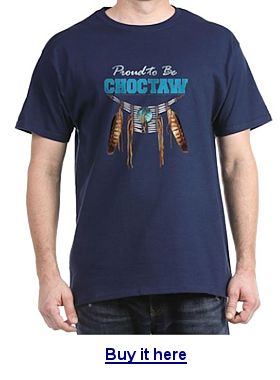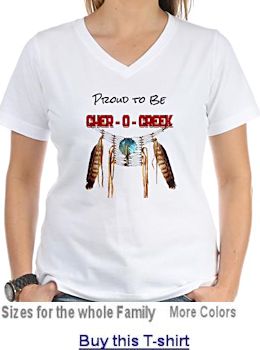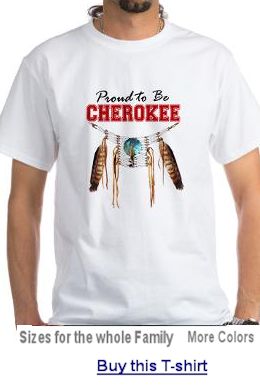Law360, New York (February 16, 2016, 3:13 PM EST) — A suit by a New Jersey tribe claiming the state has reneged on its official acknowledgment of the group illustrates the confusion that can crop up around state recognition as tribes navigate a state’s particular process to achieve and maintain that status for the sake of potentially uncertain benefits.
State Recognized Tribes
List of States Who Have State Recognized Indian Tribes
There are more than 100 state recognized indian tribes in sixteen states. These are Native American groups with self-government authority.
They are in Alabama, California, Connecticut, Delaware, Georgia, Louisiana, Maryland, Massachusetts, Montana, New Jersey, New York,North Carolina, Texas, Vermont, Virginia, and Washington.
What are State Recognized Tribes?
State recognized tribes are Indian tribes and heritage groups that are recognized by individual states for their various internal state government purposes. State recognition does not confer benefits under federal law unless federal law authorizes such benefits, as is the case for state recognized tribes under the Administration for Native American’s Native American Programs Act (NAPA). State recognized Indian tribes are not federally recognized, but federally recognized tribes may also be state recognized.
State Recognized Tribes do not have the same status or benefits as Federally Recognized Tribes
As of January 3, 2012, the United States recognized 566 Indian tribes on the federal level. Federal recognition confers specific legal status on tribes and imposes certain responsibilities on the federal government, such as an obligation to provide certain benefits to tribes and their members. Some tribes are not federally recognized but have qualified for and received federal funding. Some of these non-federally recognized tribes are state recognized and may be located on state reservations.
Of the approximately 400 non-federally recognized tribes, 26 received funding from 24 federal programs during fiscal years 2007 through 2010. Most of the 26 non-federally recognized tribes were eligible to receive this funding either because of their status as nonprofit organizations or state-recognized tribes.
Ninety-five percent of the funding was awarded to 9 non-federally recognized tribes, and most of that funding was awarded to the Lumbee Tribe of North Carolina. Similarly, 95% of the funding was awarded by seven programs in four agencies, and most of that funding was awarded by the Department of Housing and Urban Development program.
What benefits do state recognized tribes get?
There are 34 federal programs that have explicit statutory or regulatory authority to fund state-recognized tribes, tribes on state reservations, or tribes on or in proximity to a state reservation or rancheria. Some of these same programs are also available to non-Indians whose income is at the poverty level, such as the Food Stamp Program, Weatherization Assistance for Low-Income Persons Program, Low-Income Home Energy Assistance, etc.
Alphabetical list of state recognized tribes of the United States A to B
Here is an alphabetical list of profiles of state recognized tribes of the United States from A to Z. Links to tribal profile pages are at the bottom of the page.
The Juaneño Band of Mission Indians is recognized by the State of California, but is not federally recognized. They traditionally lived along the coast in what is now Orange and San Diego counties in California.
Choctaw Apache Tribe of Ebarb
22 ViewsThe Choctaw Apache Tribe of Ebarb is located in western Sabine Parish, Louisiana. They are recognized by the state of Louisiana and have petitioned for federal recognition.
The Biloxi-Chitimacha Confederation of Muskogee were recognized as a tribe by the state of Louisiana in 2005. They previously split off from the United Houma Nation, Inc., and applied for Federal Recognition in 2008. Their application is still waiting for review.
Cher-O-Creek Intra Tribal Indians
22 ViewsThe Cher-O-Creek, Intra Tribal Indians bloodlines are composed of more than one Native Blood of the Five Civilized Tribes indigenous to the State of Alabama, primarily Creek and Cherokee. Many of Cher-O-Creek members have both Creek and Cherokee bloodlines.
Cherokee Tribe of Northeast Alabama
22 ViewsThe Cherokee Tribe of Northeast Alabama (CTNEAL) is recognized by the State of Alabama, and has a representative on the Alabama Indian Affairs Commission and the Inter-Tribal Council of Alabama. It is one of nine state-recognized tribes. The federally recognized Cherokee Nation has disputed the validity of this and other state-recognized tribes claiming Cherokee descent.
Meherrin Indian Tribe
22 ViewsThe Meherrin Indian Tribe are the only non-reservation Indians in North Carolina who still live on their original Reservation lands. They were recognized by the state of NC in 1986. The Meherrin Nation is one of eight state-recognized Nations of Native Americans in North Carolina. They reside in rural northeastern North Carolina, near the river of the same name on the Virginia-North Carolina border.
Lumbee Tribe of North Carolina
23 ViewsThe Lumbee Tribe is the largest indian tribe in North Carolina, the largest tribe east of the Mississippi River and the ninth largest tribe in the nation that does not have Federal Recognition. They have been recognized by the State of North Carolina since 1885.
Haliwa-Saponi Indian Tribe
22 ViewsThe Haliwa-Saponi Indian tribe is recognized in the state of North Carolina Tribal members are direct descendents of the Saponi, Tuscarora, Tutelo and Nansemond Indians.
Coharie Tribe
32 ViewsThe Coharie Indian Tribe is recognized as an indian tribe by the State of North Carolina. They are descended from the Iroquoian-speaking Neusiok and Coree, as well as the Carolinan Iroquoian Tuscarora, and the Siouan Waccamaw, who occupied what is now the central portion of North Carolina. The Coharie have intermarried predominantly with the Lumbee and Tuscarora Indians of Robeson County, as well as with the Eastern Band of Cherokee Indians.
The Echota Cherokee Tribe of Alabama are the descendants of those Indian people who escaped the infamous “Trail of Tears” by hiding out in the mountainous backwoods and lowlands of the Southeast. Others fled from the march after it began and others simply walked away and came home after reaching Indian Territory. They are state recognized by the State of Alabama.
MOWA Band of Choctaw Indians
22 ViewsThe MOWA Band of Choctaw Indians are a state-recognized American Indian tribe located in southern Alabama, primarily in Washington and Mobile counties. The MOWA Choctaw Reservation is located along the banks of the Mobile and Tombigbee rivers, on 300 acres near the small southwestern Alabama communities of McIntosh, Mount Vernon and Citronelle, and north of Mobile.
Beaver Creek Indians
93 ViewsThe Beaver Creek Indians are the descendents of some thirty odd mixed-blood South Carolina tribes that merged together after smallpox and measles epidemics, and through intermarriage with other tribes, Europeans, and African Americans.
Adai Caddo Indian Nation
45 ViewsAdai Caddo Indian Nation is the name of a Native American people of northwestern Louisiana and northeastern Texas with a Southeastern culture. They are recognized as an indian tribe in the state of Louisiana.
Lipan Apache Tribe
22 ViewsPresent-day Lipan Apaches mostly live throughout the U.S. Southwest, in Texas, and on the San Carlos Apache Indian Reservation in Arizona, as well as with the Mescalero tribe on the Mescalero Reservation in New Mexico. The San Carlos and Mescalero tribes have federal recognition. The Lipan Apache Tribe is a state-recognized tribe headquartered in McAllen, Texas. Some Lipans also live in urban and rural areas throughout North America (Mexico, United States and Canada).
Upper Mattaponi Indian Tribe
23 ViewsThe Mattaponi were one of six tribes inherited by Chief Powhatan in the late 16th century. The tribe spoke an Algonquian language, like other members of the Powhatan Chiefdom. The paramount chiefdom of the Powhatan numbered more than 30 tribes by the time the English arrived and settled Jamestown in 1607.
In addition, a Mattaponi band had long been settled outside the reservation at an unincorporated hamlet called Adamstown, located on the upper reaches of the Mattaponi River. This has been identified as Indian land in records dating to the 17th century. In 1921, the Upper Mattaponi Tribe of Adamstown organized as an official group separate from the main Mattaponi population who resided on the reservation.
According to archeological digs, the Salinan people have occupied the Central Coast and inland areas of Calfornia for 10,000 years. Also known as the Antoniaño, this state recognized indian tribe has over 700 members.
Brief Summary.
Machis Lower Creek Indian Tribe
22 ViewsStar Clan of Muscogee Creeks
22 ViewsBrief summary.
The Powhatan Indians
22 ViewsAt the time European settlers arrived in the Chesapeake Bay, the region was occupied by approximately 13,000 to 14,000 Powhatan Indians. The Powhatan settlements were concentrated along the rivers, which provided food and transportation.




